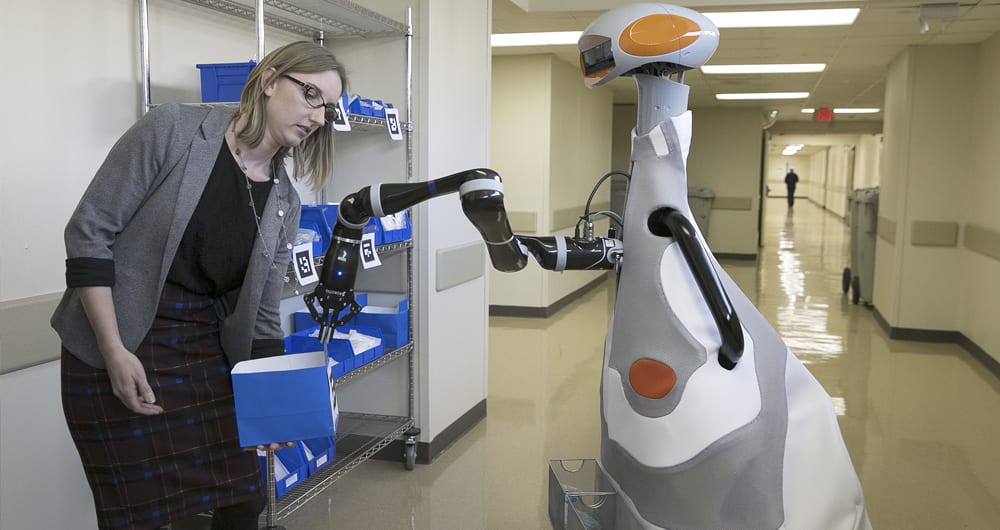
It’s often a controversial idea, but with the great advancements in technology, we could be seeing robots in the corridors of Australia’s aged care facilities sooner than you think.
Historically, robotics in industry meant automation with machines performing more effectively than humans.
Now new innovation highlights what people and robots can do better together – acknowledging and building upon human capacity.
The Aged care industry needs innovation decides to help them do what they do best – care.
This is what Olaf Zalmstra, CEO of MiCare, talked about at the ITAC conference in the Gold Coast.
There are a number of technologies that improve care delivery through improved safety, staff efficiencies, effective and ‘on time’ care.
Zalmstra explained that there were endless possibilities – which they have seen at MiCare – with delivery robots.
“Our first priority was out food transport between the kitchen and three levels of the facility, getting it there on time and fit enough to be served,” said Zalmstra.
“But then we started the think outside the square and thought ‘well our laundry is also that way’ – why don’t we move out linen, both clean and dirty backwards and forwards with the delivery robots”.
They can deliver things from food, linen, waste, mail, as well as general and pharmaceutical good.
Thought this technology is yet to be advanced in such a way, Zalmstra says that they are looking to have the robots can assist nurses as they do their medical rounds of the residents.
As Zalmstra highlighted, there are a number of benefits of having robot assistance for staff.
Firstly, it eliminates manual handling – streamlining boring processes that use up staffs time, leaving them with more time for interacting and caring for the residents.
Having assistance in aged care homes can help reduce workplace health and safety claims. The chances of burnout is incredibly high in aged care. By having robots help aged care workers by sharing their workload, it not only reduces stress and burnout, but also decreases the frequency of injury and sick leave used.
Aged care workers, though having a wide range of responsibilities, really have one core focus – the residents.
Many aged care staff will tell you that they feel rushed between all the menial work they have to do – like cleaning and paperwork – that they do not have enough time to properly feed, bathe and bond with the elderly residents.
If having robots in aged care could help bring give them that time back, then is that something all aged care homes in Australia should consider?